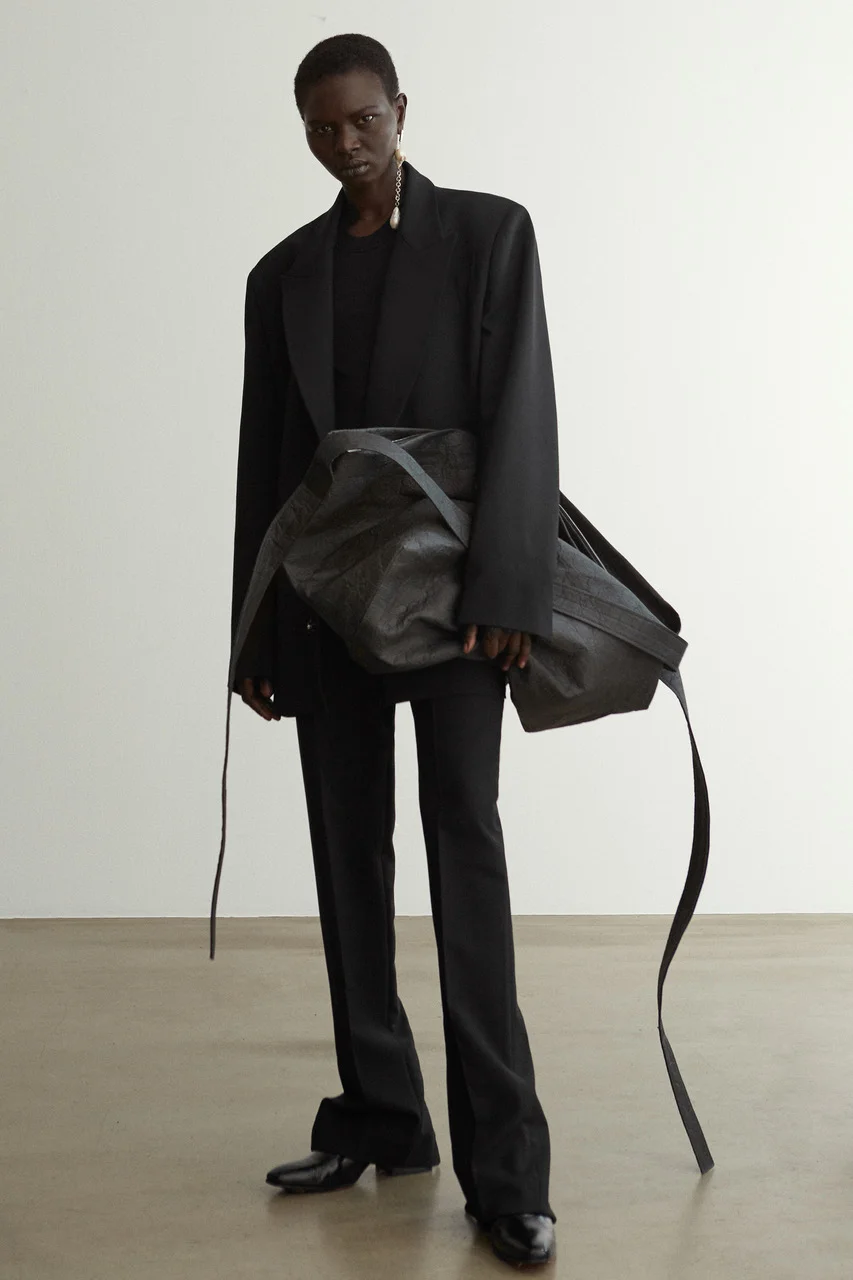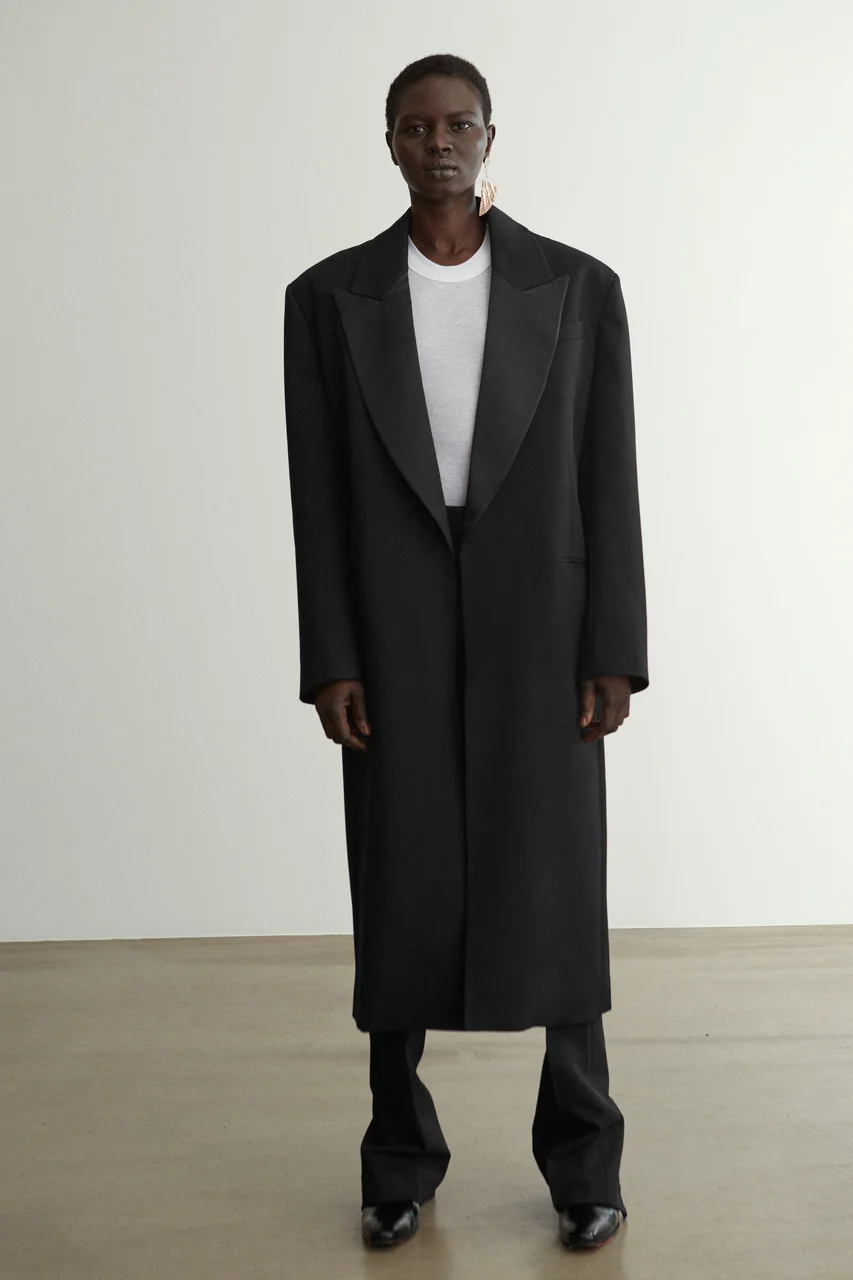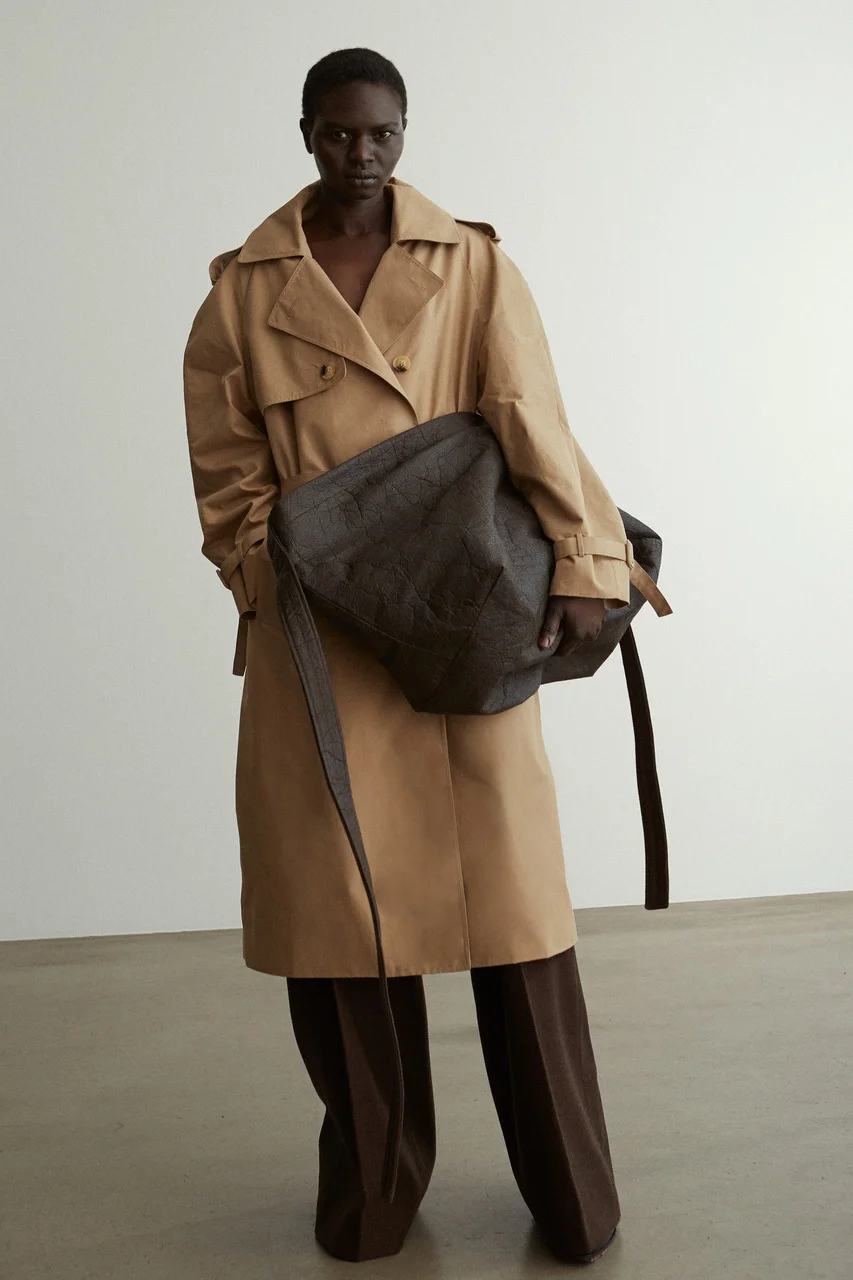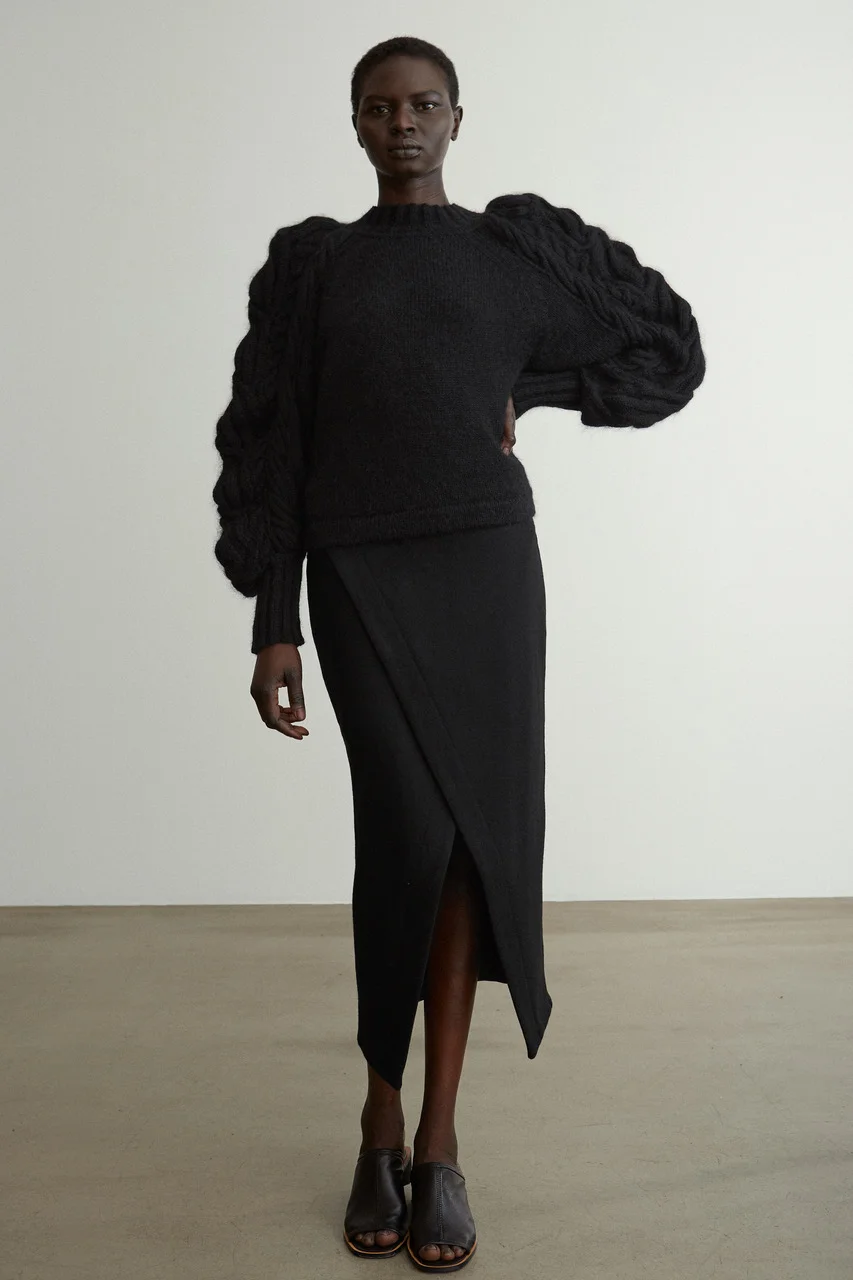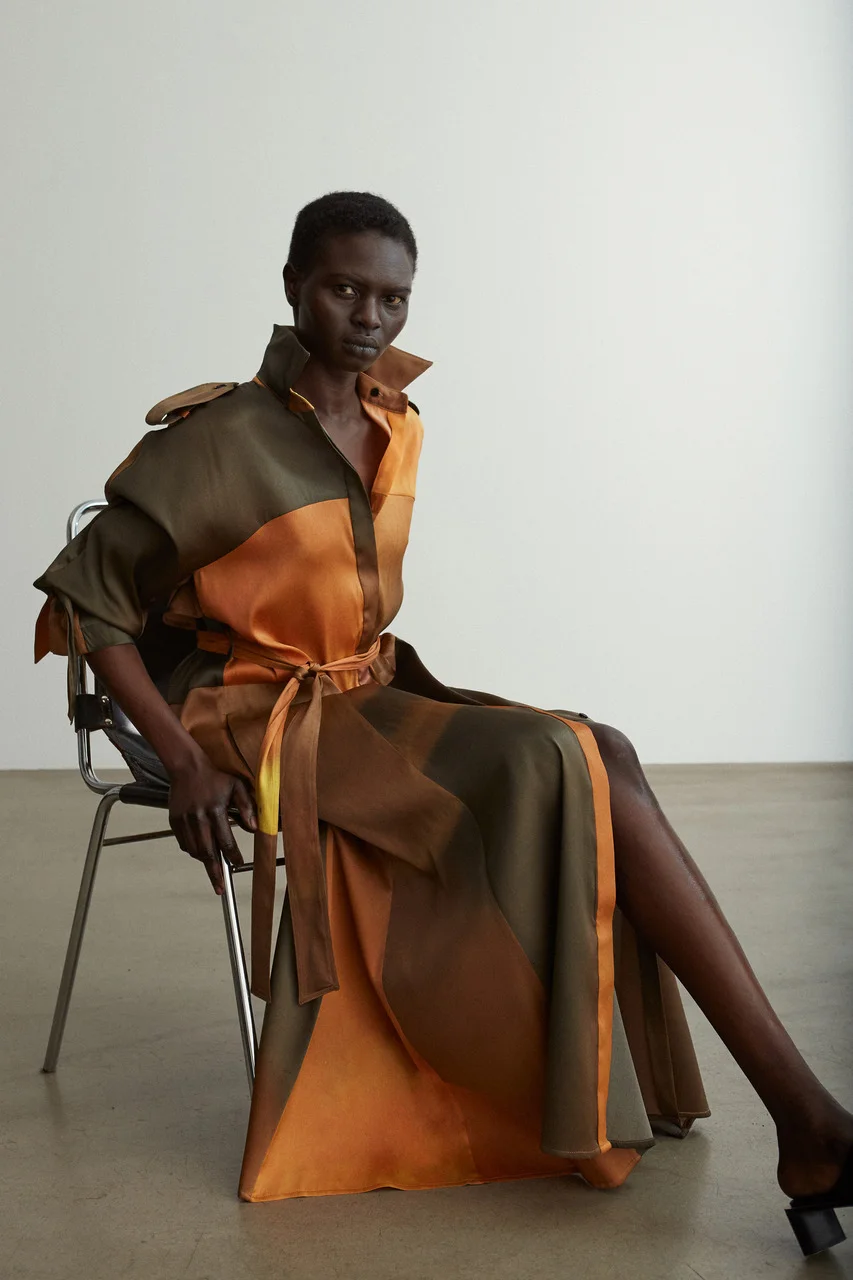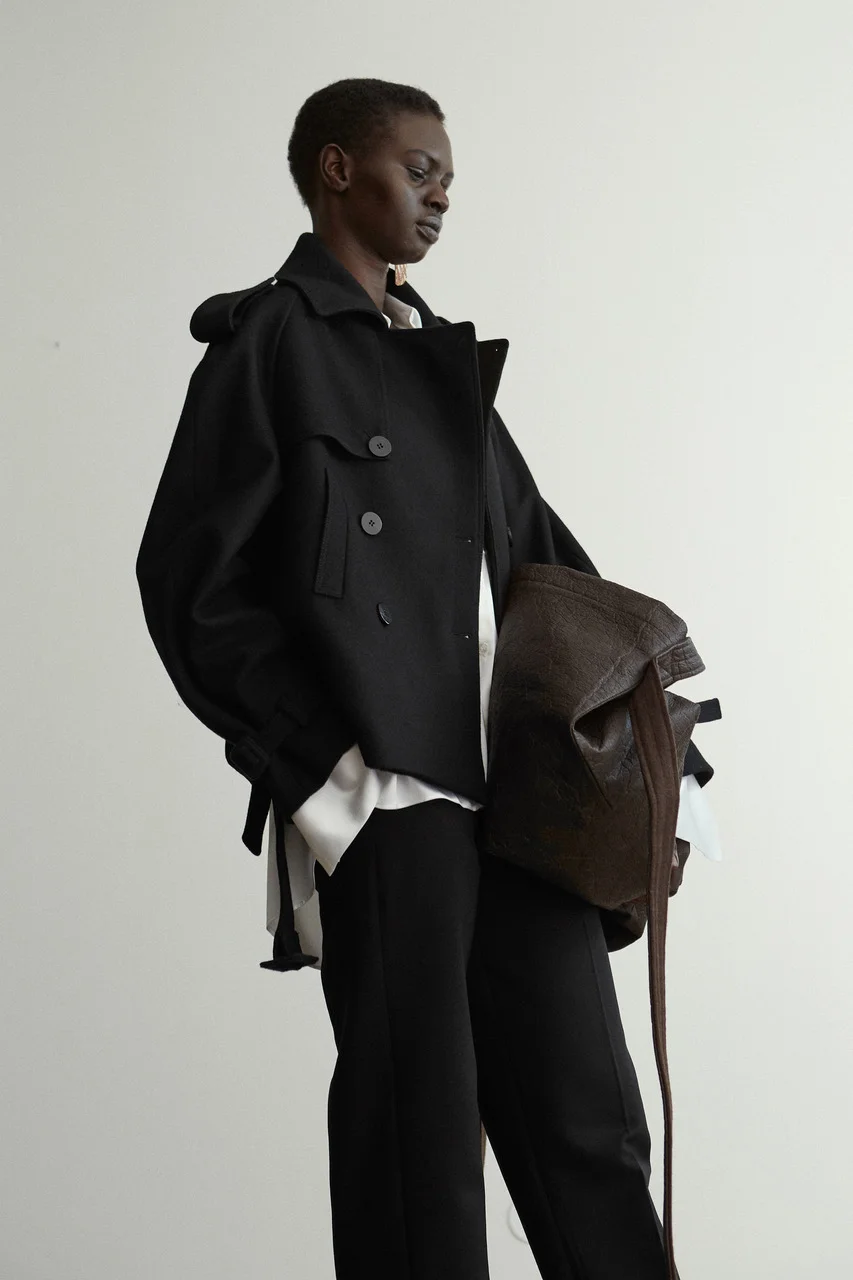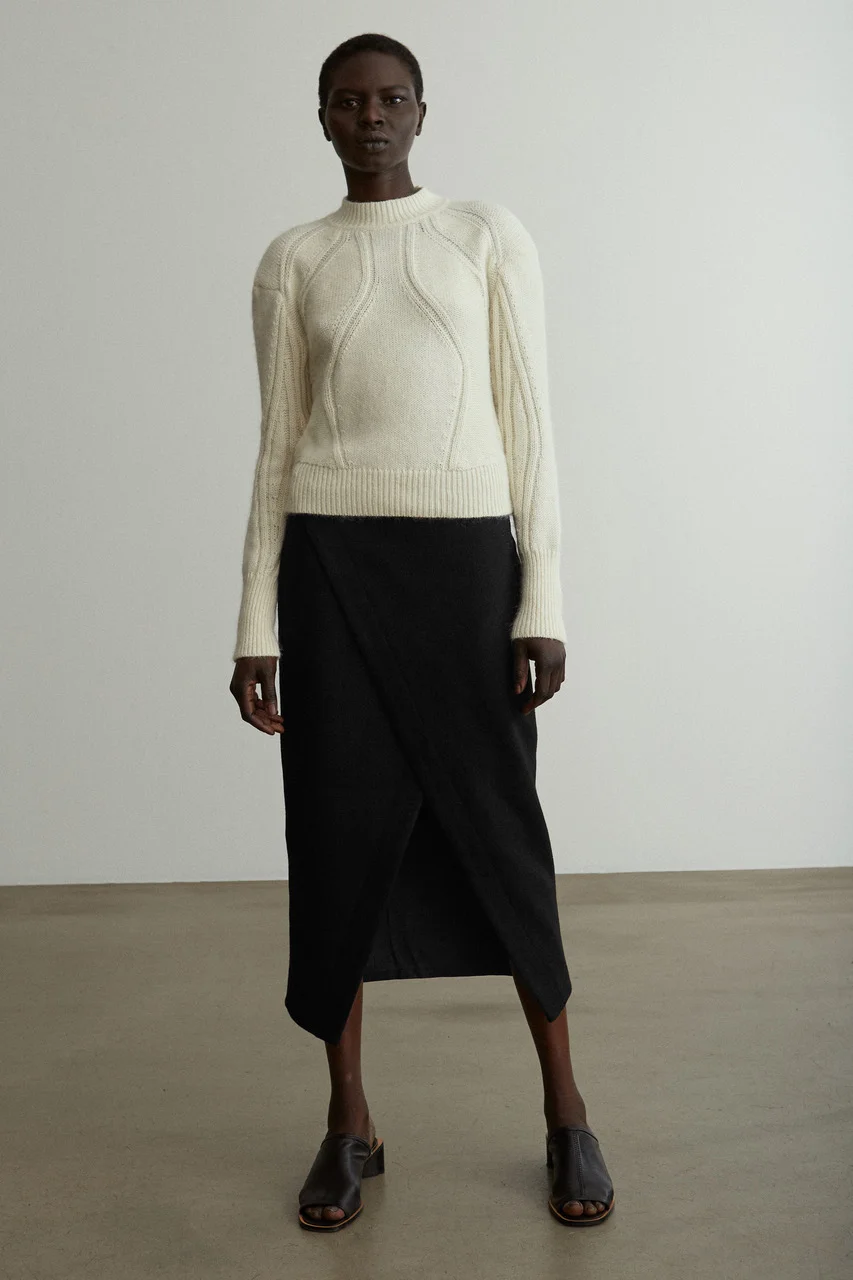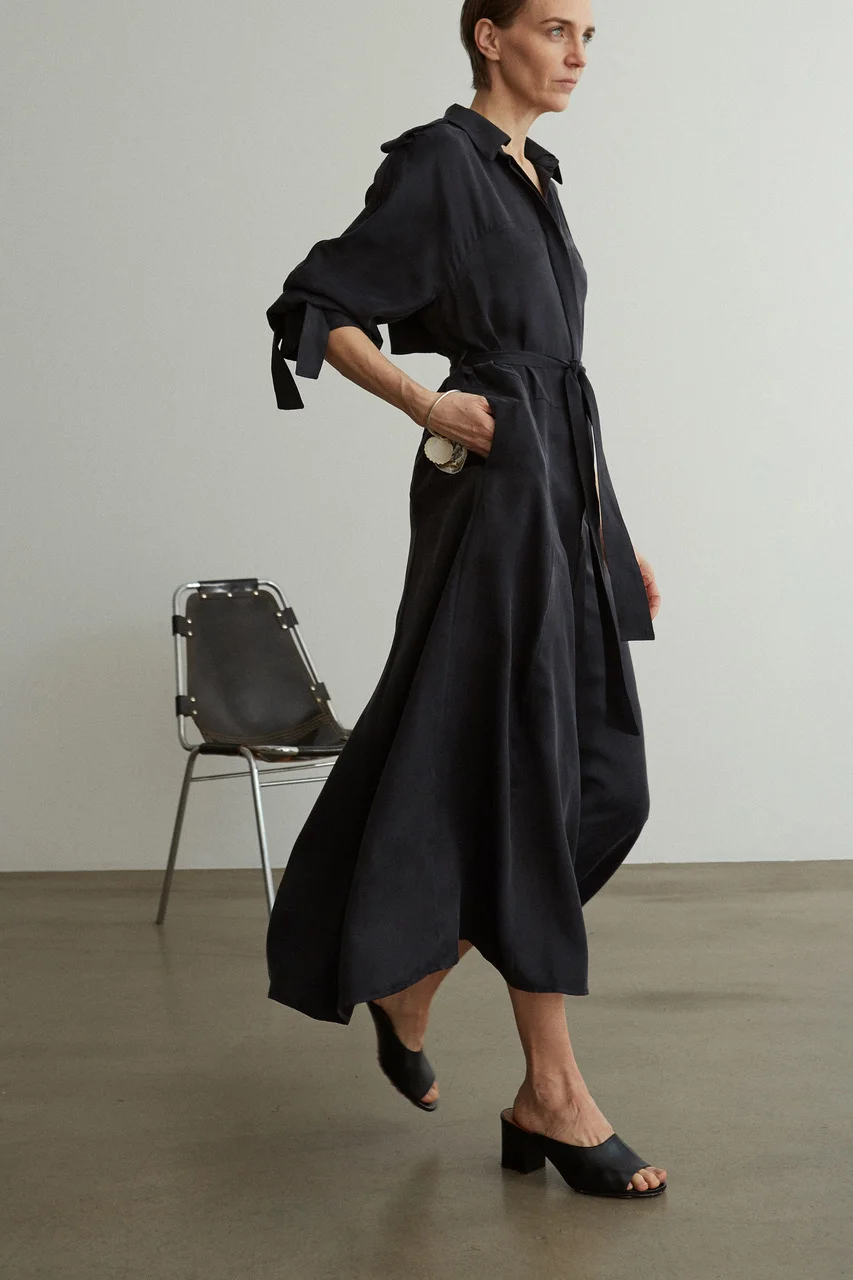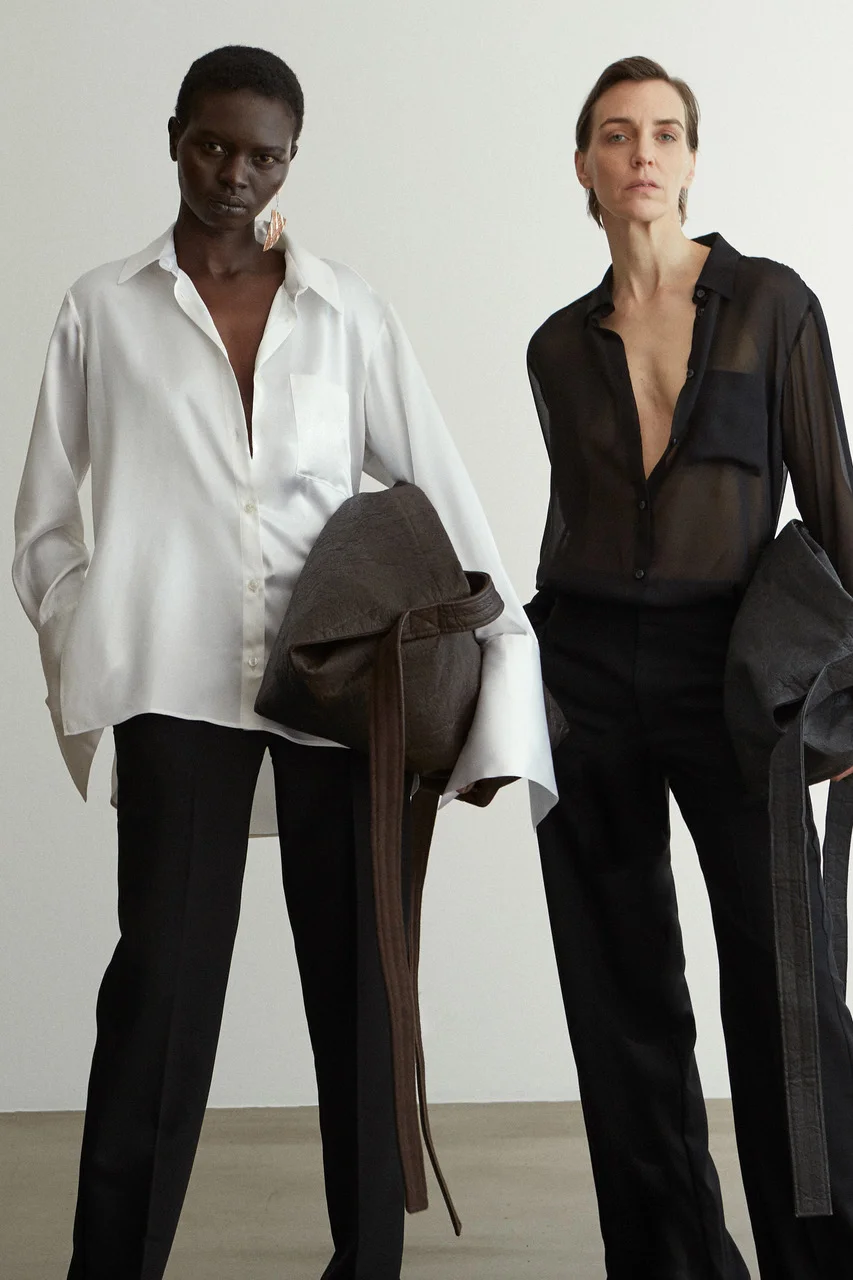Pushing boundaries: Bite Studios
By BEL JACOBS
Luxury sustainable brand BITE was founded across Stockholm and London by four likeminded individuals - William Lundgren, Veronika Kant, Elliot Atkinson and Suzanne Emanuelsson - who wanted to make something beautiful, with human and environmental ethics at its core. The ethos is embedded in the name: BITE stands for ‘By Independent Thinkers for Environmental progress’. And progress it certainly is. BITE pushes boundaries in design and fabrications and creates with natural, non-harmful dying processes and treatments.
Inspiration reflects the interests of Creative Director Atkinson: 19th and 20th century female artists and tastemakers. ’For AW19, we looked at artists such as Meret Oppenheim, Lee Miller, Gillian Wearing, Sarah Lucas and Anni Albers and how they dressed and subverted their own image as muse and subject. We use this as touching points for silhouette as well as an understanding of the agency of dressing within our woman, of how the woman we design for understands herself and wishes to be represented through our clothes.’
Prints inspired by the watercolours of Irene Monat Stern complement solid, sculpted shapes, sharp tailoring inspired by menswear and a refined palette of mostly black, with hints of caramel, turmeric and brown. Silhouettes are flattering, not body-hugging. A signature tailored shirt offers slightly flared, exaggerated cuffs - the kind of detail that makes items immediately, identifiably Bite Studios. Of a sculptured dress, inspired by Naum Garbo, Atkinson says: “I really look at sculpture and artists when I design, to create soft sculpting on the body, that incorporates volume and proportion.”
The AW19 collection will be stocked exclusively at Net-A-Porter and online.
How has the brand developed over the past year?
Atkinson: It’s been a huge trajectory. We worked with buyers and customers to broaden the scope of the collection. We speak to customer who is very [aware of the world around her]. She could be an activist or a lawyer - she could be Gwyneth Paltrow - but there is an intelligence and integrity in our collections. We create beautiful pieces you can wear for a very long time. The idea is that it’s an evolving wardrobe. There’s a core offering that you can come back to - such as the trench, the coat, the trousers, the shirts - and that you can mix with the very directional pieces. Less stuff, more beautiful pieces. And there’s more consideration to fabrics, materialisation, dying processes. Everything is made with organics. The silk is an organic ‘peace’ silk. We’ve also started working with developments in recycled plastic bottles for buttons and zips.
Your aim is a 100 per cent sustainable collection. How have you done that?
Atkinson: It’s the research we’ve done into materialisation and also the way we set up the business: from the basic principle that we take into consideration everything in our supply chain to the idea of the wardrobe that is maintained through each collection so that it’s not this wasteful throwaway concept.
Have you had to compromise?
Atkinson: We’ve had to modify the way we work. [In conventional design], there are millions of fabrics to choose from. We have an option of about 1 per cent, if that. But limitations drive our aesthetic, which has become more considered. We have to deliver a conscious product that has purpose and meaning - and is not just more stuff.
Kant: We also work closely with our suppliers in Europe and Japan to create the fabrics we need. We’ll say to them, “can this be organic” or “can we replace these with recycled materials?’ That process of always evolving our material library is crucial for us.
Working closely with suppliers is a key way of addressing concerns around transparency. How open do you feel suppliers are to making changes?
Kant: Very open. Some are really keen on working on more sustainably and with organics and developing new things.
You pair clean lines with very romantic, almost flamboyant flourishes. Talk me through the design.
Atkinson: It’s such a dirty word right now but our collective DNA is definitely a paired back, considered minimalism. Again, it’s coming back to the idea that everything must have a purpose. The trench is a great example. It’s based on a menswear pattern so it’s more of a masculine silhouette, so that it caters for different body shapes but there’s still a consideration to the body. It’s not all over the place.
When anyone working in the climate change movement is saying ‘we need to buy less’, how do you balance that with producing more?
Lundgren: Nudie does it very well. They produce things organically; they have an interesting business model where they try to bring new life into their pieces. They ofer the repair service. We are looking into that but we’re not there yet. It’s very important to build that business model, where we’re not actually only sell new things but we also make money in the ownership. So the relationship starts when you buy something and then we can add things on top. It’s a challenge for the whole industry.
Kant: We are introducing a re-collect service where we offer customers the chance to send things back. They will get 30% off new purchases - and we’ll take those things and repair them, give a new life, evolve, and release them as an archive. That’s also a way of closing the loop a bit. We exist to do the best that’s possible now and to be an alternative that’s doesn’t compromise for customers. It’s hard as a customer today; you have to know a lot. We see our role as trying to shift the conversation.
Lundgren: The ultimate call for us is to show that it’s possible and to push others. We’re a small company but we want to be a brand that’s pushing the agenda forward. It would totally be better if we didn’t buy anything, but it’s kind of finding the alternative within the system.
We are in a state of transition …
Lundgren: Yes, and the conversation has moved so quickly in the last three months it’s been amazing. Greta Thunberg is pushing it a lot.
How do you communicate your sustainable core to your customer?
Atkinson: That’s a challenge as well. We thought about how to add labelling to our website, talking to the end customer about what things are made from, what they are conventionally made from and why our alternative is much better. Our next step is to communicate to that end customer so they really understand what we are doing differently.
Kant: It’s about being very detailed and informative in the actual product. When you buy online, you see where the material is from, where the fibre is from. It’s more about each product and how it’s different.
What are your hopes for the brand?
Lundgren: We want to be a big player that push the agenda forward and challenge industry norms. It’s very important for us.
And to do that, you have to be a certain size.
Lundgren: Yes. When people are shifting from commercial to organic cotton, we are taking market shares form one side to another. That’s very important in this stage. We see the growth as an opportunity for us to push the agenda. It’s complex. The more you learn the more you know that you have to learn.
Your next two collections will be stocked exclusively on Net-a-Porter.
Lundgren: And they’re moving as well. To see that the whole industry. A lot of big players have taken action. It’s the same shift happening in the food and skincare industries. Future consumers don’t want to buy things, they want to buy stuff that they know where they are made. We’re not downsizing the quality, we are working with high quality materials. It’s a real luxury product and that’s really important and people are realising that.
